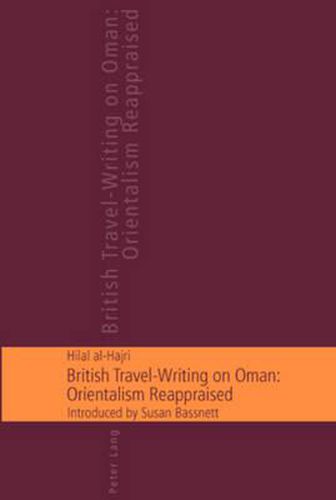Readings Newsletter
Become a Readings Member to make your shopping experience even easier.
Sign in or sign up for free!
You’re not far away from qualifying for FREE standard shipping within Australia
You’ve qualified for FREE standard shipping within Australia
The cart is loading…






This book focuses on the images of Oman in British travel writing from 1800 to 1970. In texts that vary from travel accounts to sailors’ memoirs, complete travelogues, autobiographies, and letters, it looks at British representations of Oman as a place, people, and culture. The study discusses the current Orientalist debate suggesting alternatives to the dilemma of Orientalism. It also outlines the historical Omani-British relations, and examines the travel accounts written by several British merchants and sailors who stopped in Muscat and other Omani coastal cities in the nineteenth century. Another focus is with the works of travellers who penetrated the Interior of Oman such as James Wellsted and Samuel Miles, and the travellers who explored the southern Oman and the Empty Quarter. Finally the book looks at the last generation of British travellers who were in Oman from 1950 to 1970 employed either by oil companies or the Sultan Said bin Taimur. The gap of knowledge that this book undertakes to fill is that most of the texts under discussion have not been studied in any context.
$9.00 standard shipping within Australia
FREE standard shipping within Australia for orders over $100.00
Express & International shipping calculated at checkout
This book focuses on the images of Oman in British travel writing from 1800 to 1970. In texts that vary from travel accounts to sailors’ memoirs, complete travelogues, autobiographies, and letters, it looks at British representations of Oman as a place, people, and culture. The study discusses the current Orientalist debate suggesting alternatives to the dilemma of Orientalism. It also outlines the historical Omani-British relations, and examines the travel accounts written by several British merchants and sailors who stopped in Muscat and other Omani coastal cities in the nineteenth century. Another focus is with the works of travellers who penetrated the Interior of Oman such as James Wellsted and Samuel Miles, and the travellers who explored the southern Oman and the Empty Quarter. Finally the book looks at the last generation of British travellers who were in Oman from 1950 to 1970 employed either by oil companies or the Sultan Said bin Taimur. The gap of knowledge that this book undertakes to fill is that most of the texts under discussion have not been studied in any context.